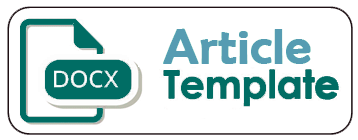IMPLEMENTATION OF COOPERATIVE LEARNING IN ARABIC LEARNING
DOI:
https://doi.org/10.32497/jolali.v2i1.4268Keywords:
Arabic, cooperative learning, conventional learning methods, teacher centered, student-centeredAbstract
So far, learning Arabic is still dominated by conventional learning methods, which position the teacher as the main source of knowledge (teacher-centered). This causes students to be passive and feel bored, so the results of learning Arabic are not optimal. The lack of success in learning Arabic so far is caused by several factors. One of them is that the strategies and methods used so far are not quite right. One effort that can be made to overcome these difficulties is by applying the cooperative learning method, which is a group-centered and student-centered method that involves students actively discussing with each other and exchanging thoughts and opinions to solve problems together. Efforts to maximize students by applying cooperative learning methods are the embodiment of the latest learning paradigm, which has shifted from teacher-centered to student-centered. With the application of this method, learning Arabic, which was originally passive, boring, and considered a scourge, will change to learning that is active, participatory, fun, and considered a necessity.References
Al ”˜AzÄ«z, SÄlih ”˜Abd dan Al MajÄ«d, ”˜Abd al ”˜AzÄ«z ”˜Abd, Al Tarbiyah wa Turuq al TadrÄ«s. Juz I. Cairo: DÄr al Ma”™arif, p.168
Aẓ ẓafr, AwÄthif bint ”˜Abd al ”˜AzÄ«z, AÅ›ar IstikhdÄm IstirÄtÄ«jiyyah al Ta”™allum al Ta”™awunÄ« al ItqÄnÄ« ”˜alÄ Ta”™allum al Lugah al InjilÄ«ziyah ladÄ al ThÄlibÄt al á¹£af al Å›alits al Mutawassiá¹ wa IttijÄhihinn nahw al MÄddah bi MuhÄfaẓah al AhasÄ”™, Saudi Arabia: WizÄrah al Tarbiyah wa al Ta”™lÄ«m al Mamlakah al ”˜Arabiyah al Sa”™Ã»diyah, 2006, p.x
Hamalik, Oemar, Kurikulum dan Pembelajaran, Jakarta: PT Bumi Aksara, 2013, p.57
Isjoni, Cooperative Learning: Efektifitas Pembelajaran Kelompok, Bandung: Alfabeta. 2013, p. 38-39
Khan, Shafqat Ali, An Experimental Study to Evaluate The Effectiveness of Cooperative Learning Versus Traditional Learning Method, Dissertation, Pakistan: International Islamic University Islamabad, 2008, p. 19
Kharma, Nayif dan Hajjaj, Ali, Al LugÄt al Ajnabiyah Ta”™lÄ«mihÄ wa Ta”™allumihÄ, Kuwait: ”˜Alim al Ma”™rafah, 1990, p. 52
Liang, Tsailing, Implementing Cooperative Learning in Efl Teaching Process and Effects, Dissertation, National Taiwan Normal University, 2002, p. iv
Liao, Hui-Chuan, Effects of Cooperative Learning on Motivation, Learning Strategy Utilization, and Grammar Achievement of English Language Learners in Taiwan, Dissertation, University of New Orleans, 2005, P. 208-209
Lie, Anita, Cooperative Leaning: Mempraktikkan Cooperative Learning di Ruang-Ruang kelas, Jakarta: Grasindo, 2004, p.31
Sharan, Schlomo, The Handbook of Cooperative Learning, translated by Sigit Prawoto from Handbook of Cooperative Learning Methods, Yogyakarta: Familia, 2012, p. 561
Slavin, Robert E., Cooperative Learning: Teori, Riset dan Praktik, diterjemahkan oleh Narulita Yusron, dari Cooperative Learning: Theory, Research and Practice, Bandung: Nusa Media, 2005, p. 4
Susanto, Ahmad, Teori Belajar & Pembelajaran di Sekolah Dasar, Jakarta: Kencana, 2013, p. 96
Trianto, Model-Model Pembelajaran Inovatif Berorientasi Konstruktivistik: Konsep, Landasan Teoritis-Praktis dan Implementasinya, Jakarta: Prestasi Pustaka, 2007, p. 15
Tran, Van Dat, The Effects of Cooperative Learning on the Academic Achievement and Knowledge Retention, International Journal of Higher Education Vol. 3 No. 2 2014, Sciedu Press, p. 137
Tu”™aimah, RusydÄ« Ahmad, Al mahÄrÄt al Lugawiyyah: MustawayÄtihÄ TadrÄ«sihÄ á¹£u”™Ã»bÄtihÄ, Cairo: Dar el Fikr el ArabÄ«, 2004, p. 181
Downloads
Published
Issue
Section
License
Authors who publish with this journal agree to the following terms:- Authors retain copyright and grant the journal right of first publication with the work simultaneously licensed under a Creative Commons Attribution License that allows others to share the work with an acknowledgement of the work's authorship and initial publication in this journal.
- Authors are able to enter into separate, additional contractual arrangements for the non-exclusive distribution of the journal's published version of the work (e.g., post it to an institutional repository or publish it in a book), with an acknowledgement of its initial publication in this journal.
- Authors are permitted and encouraged to post their work online (e.g., in institutional repositories or on their website) prior to and during the submission process, as it can lead to productive exchanges, as well as earlier and greater citation of published work (See The Effect of Open Access).





